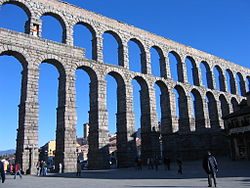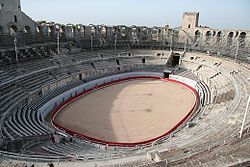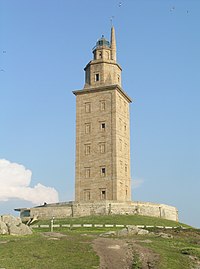Tile covered concrete quickly supplanted marble as the primary building material and more daring buildings soon followed, with great pillars supporting broad arches and domes rather than dense lines of columns suspending flat architraves. The freedom of concrete also inspired the colonnade screen, a row of purely decorative columns in front of a load-bearing wall. In smaller-scale architecture, concrete's strength freed the floor plan from rectangular cells to a more free-flowing environment. Most of these developments are ably described by Vitruvius writing in the first century AD in his work De Architectura.

Although concrete had been used on a minor scale in Mesopotamia, Roman architects perfected it and used it in buildings where it could stand on its own and support a great deal of weight. The first use of concrete by the Romans was in the town of Cosa sometime after 273 BC. Ancient Roman concrete was a mixture of lime mortar, pozzolana, water, and stones, and stronger than previously-used concrete. The ancient builders placed these ingredients in wooden frames where it hardened and bonded to a facing of stones or (more frequently) bricks. When the framework was removed, the new wall was very strong with a rough surface of bricks or stones. This surface could be smoothed and faced with an attractive stucco or thin panels of marble or other coloured stones called revetment. Concrete construction proved to be more flexible and less costly than building solid stone buildings. The materials were readily available and not difficult to transport. The wooden frames could be used more than once, allowing builders to work quickly and efficiently.

On return from campaigns in Greece, the general Sulla returned with what is probably the most well-known element of the early imperial period: the mosaic, a decoration of colourful chips of stone inset into cement. This tiling method took the empire by storm in the late first century and the second century and in the Roman home joined the well known mural in decorating floors, walls, and grottoes in geometric and pictorial designs.
Though most would consider concrete the Roman contribution most relevant to the modern world, the Empire's style of architecture, though no longer used with any great frequency, can still be seen throughout Europe and North America in the arches and domes of many governmental and religious build






